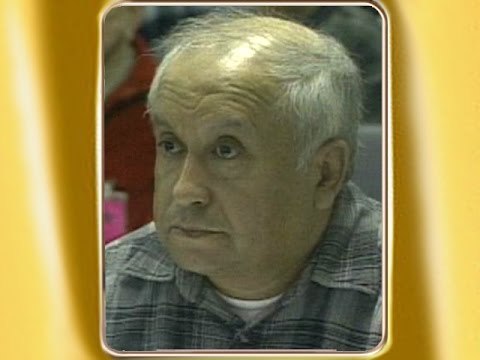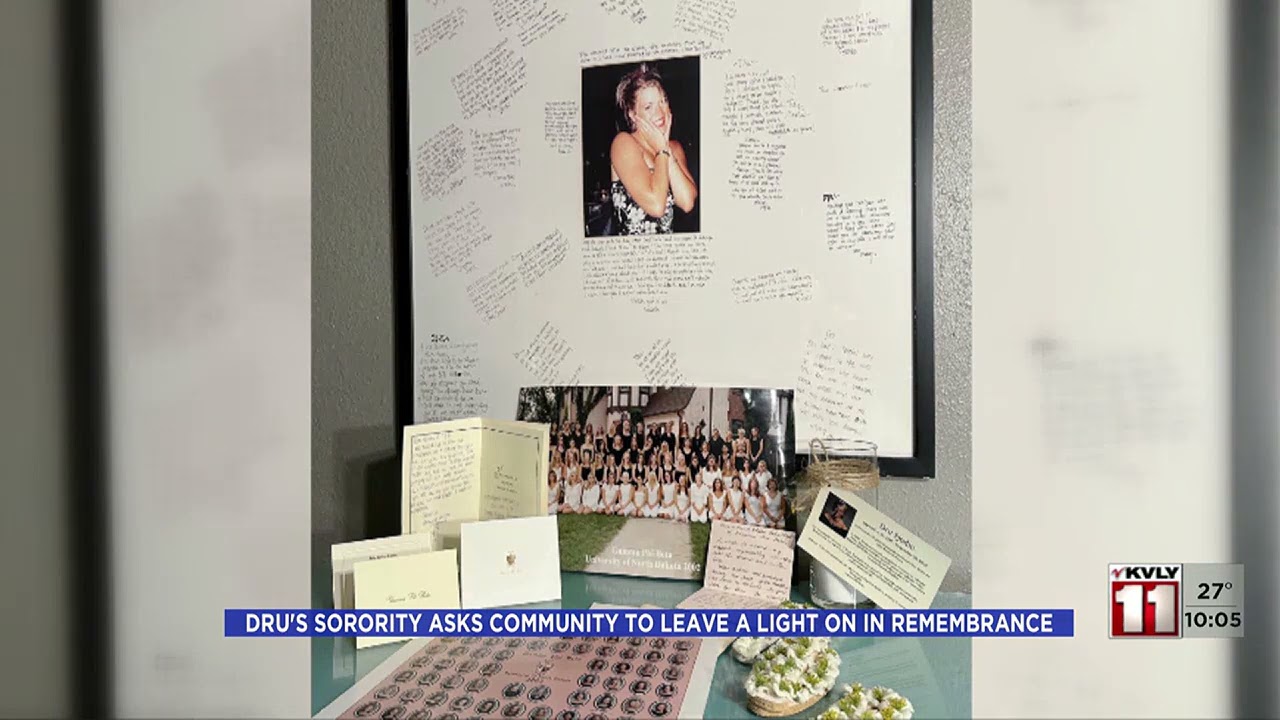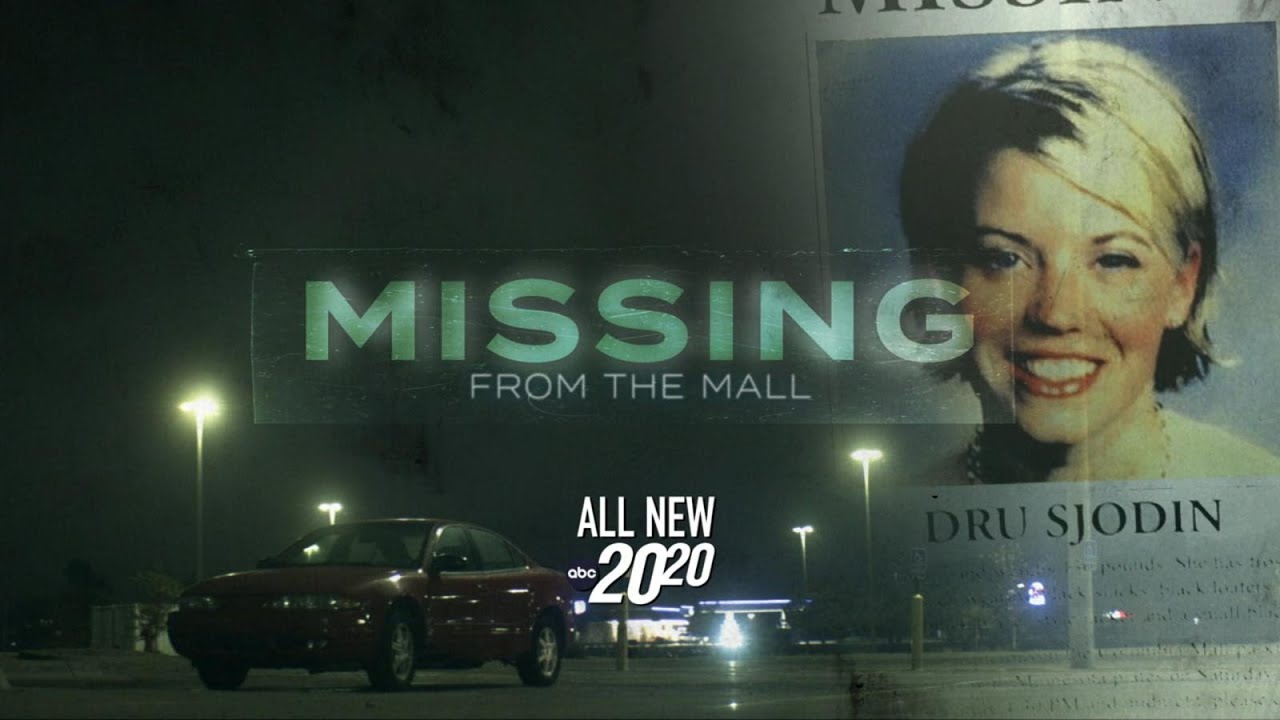
Dru Sjodin Tragedy Affects Community Deeply
1. Understanding the Dru Sjodin Tragedy: A Community’s Loss
The heart-wrenching tale of Dru Sjodin started on a chilly night in November 2003 when the young woman was abducted from a shopping center in Grand Forks, North Dakota. Dru was a bright and ambitious student at the University of North Dakota, but her life was tragically cut short. Her abduction and murder sparked outrage across the nation and forever changed the narrative about women’s safety in Minnesota and beyond.
Dru Sjodin became more than just a victim; she became a poignant reminder of the vulnerabilities women face daily. The national media coverage and her family’s heart-wrenching pleas catalyzed awareness and conversations surrounding safety and justice. The despair felt by her loved ones resonated deeply within the communities of Duluth and Crookston, touching many hearts and prompting discussions about crime prevention and community support systems.
As her story unfolded, Dru’s tragedy put a spotlight on the importance of vigilance in neighborhoods and schools. Those in the Duluth area recognized their responsibility to ensure the safety of their loved ones and neighbors, addressing the unsettling realities of violence against women. This tragedy transformed how people perceived their environment, galvanizing community members to engage in meaningful conversations about ensuring safety and providing support for one another.

2. Top 5 Ways the Dru Sjodin Case Changed Community Policies
Dru Sjodin’s case prompted educational institutions in Minnesota to implement more robust safety protocols for students living off-campus. Programs like the Safe Walk initiative emerged, ensuring students could safely traverse campus and nearby areas after dark. Additionally, universities increased their police presence, emphasizing the importance of reporting suspicious activity.
Following Dru’s tragic death, Minnesota lawmakers took significant strides to reform laws surrounding sex offenders. This led to the establishment of stricter regulations, including public notification systems regarding the whereabouts of released offenders and residential restrictions aimed at protecting communities. These legislative changes increased local vigilance and awareness around sexual crimes.
In the wake of her loss, various non-profits emerged, contributing crucial resources for victims’ families. The Dru Sjodin Foundation was established to advocate for family support and educate the public on prevention measures. These resources have become vital for families navigating similar tragedies, providing both emotional and practical support.
Communities launched campaigns to raise awareness about violence against women, fostering educational workshops and sharing informational pamphlets. These initiatives empower people to understand safety protocols, how to recognize warning signs, and the importance of being proactive in reporting incidents. Public discussions encouraged open dialogue on these profound issues.
Local police departments began incorporating crisis intervention training to better address issues of violence against women. By focusing on mental health considerations and fostering empathy, these programs aspire to create a more supportive environment for victims when reporting crimes. The goal is to ensure that victims feel safe and heard, ultimately promoting community trust.
3. The Legacy of Dru Sjodin in Pop Culture: Reflections in Film and Art
The tragic story of Dru Sjodin continues to resonate in popular culture, impacting industries ranging from film to theater. While it serves as a haunting reminder of loss, this tale fuels creative narratives emphasizing community resilience. Numerous independent films emerge, inspired by deplorable real-life incidents, capturing the raw and complex emotions associated with such tragedies.
For instance, the film “The Forgotten” (2004) delves into unresolved missing-person cases, echoing the struggle and heartache seen in Dru’s story. Such narratives aim to evoke empathy from viewers, providing a deeper understanding of the impacts of violence on families and communities. This powerful storytelling not only honors Dru’s memory but invites audiences to engage meaningfully with the themes of safety and justice.
Television narratives have also drawn inspiration from real-life victims, reflecting the struggles faced by communities post-tragedy. Series focusing on the impact of crime connect with audiences, shining a light on the importance of dialogue and healing. As audiences tune in, characters embody the resilience and determination of those affected by similar situations, serving as a reminder that healing and change are possible.

4. The Impact of Real Crime on Fiction: Influences of Figures Like Jon Erik Hexum
Tragedies like Dru Sjodin’s story don’t just stop at the headlines; they ripple through creative storytelling as seen with figures like Jon Erik Hexum. Best known for his charming roles during early television’s golden age, Hexum’s untimely death during a stunt underscores the fragility of life, much like Dru’s own ordeal. His legacy prompts audiences to reflect on the consequences of actions, leaving a lasting impression on viewers about the weight of loss.
This profound intersection of reality and fiction encourages filmmakers and storytellers to explore darker themes inspired by real crimes. As dramas unfold, audiences are left questioning the motivations and societal structures that contribute to such tragic events. By reflecting on these narratives, viewers might gain a deeper understanding of how society can create change and foster healing.
Dru Sjodin’s influence can also be seen in indie films and projects that tackle issues of crime and recovery. As creators strive for authenticity, they shed light on the struggles faced by victims’ families, fostering compassion and urgency among viewers. This growing trend emphasizes that the echoes of real-life tragedies can indeed inspire movements that advocate for change and prevention.
5. The Role of Community Engagement in Healing: Leaders like Ron Eldard and Christopher Heyerdahl
In the aftermath of the Dru Sjodin tragedy, community leaders and figures like actor Ron Eldard emerged to champion healing and awareness. Eldard’s efforts include spearheading initiatives to unite communities in the pursuit of support and protection for vulnerable populations. Through philanthropy and advocacy, public figures can activate positive change, illustrating the power of collective action.
Adding to this, Christopher Heyerdahl, known for his roles in various indie films, has participated in community benefits designed to improve safety and network support. His involvement in discussions around violence prevention showcases how celebrity influence can elevate important conversations. By leveraging their platforms, such individuals inspire others to take a stand against violence while fostering dialogue on societal issues.
These artists underscore a vital message: community engagement is essential in recovering from tragedies like Dru’s. As leaders navigate healing journeys, their initiatives can empower communities to strengthen their bonds and cultivate a culture of safety. This ongoing effort continues to shape the response we have to violence, reaffirming the importance of vigilance and unity.
Reframing the Narrative: Moving Forward Together
As we reflect on the life and legacy of Dru Sjodin, it becomes clear that her tragedy has sparked essential conversations about safety and resilience. The changes that arose in response to her story demonstrate the capacity for communities to evolve and rally for meaningful action. Awareness campaigns and revamped policies illustrate a commitment to fostering safer environments for all.
The cultural reflections seen in films and arts remind us of the enduring nature of human struggle and triumph. This ongoing dialogue encourages us to redefine how society addresses violence and establishes support systems for those affected. Addressing vulnerabilities helps create a future where tragedies like Dru’s are not commonplace but instead, are seen as opportunities for change.
The importance of community engagement, awareness, and activism resonates deeply as we strive to honor Dru Sjodin’s memory. Together, we can cultivate a society that prioritizes safety and fosters healing, making the dream of a world free from violence a shared reality.
Dru Sjodin’s Legacy and Its Profound Impact on the Community
The tragedy surrounding Dru Sjodin isn’t just a heartbreaking story; it’s a turning point that left an indelible mark on the community. After her abduction in 2003, efforts to raise awareness about safety precautions surged dramatically. In particular, this incident shone a spotlight on the necessity of homeowner insurance, with many individuals seeking information on homeowner insurance cost in the wake of heightened concerns for personal security. Communities began pooling resources to keep one another informed, reiterating the importance of being vigilant in an increasingly unpredictable world.
As the investigation unfolded, it became clear that the conversation had to shift. People started to pay serious attention to local crime rates and the implications for residents. This led to meetings held in schools and community centers—discussions that many might typically skip. Yet, these gatherings became vital for sharing insights about local issues and suggestions on how to stay safe, almost like a little workshop in house (in house). Moreover, various initiatives emerged aiming to support families affected by crimes, fueling a spirit of resilience and unity during such tough times.
Today, Dru’s life and the sorrow surrounding her story also inspire creative expressions and tributes within popular culture. For instance, it’s fascinating to see how such tragic events can spark artistic movements—much like how even a plush toy like the Bfdi taco plush can evoke feelings of nostalgia, prompting heartfelt memories and conversations long after the tragic event has passed. The memory of Dru Sjodin serves as a reminder to cherish loved ones, and even seeks to inspire young folks navigating their future—a theme echoed in dramatic storytelling quite like the gripping plots of “Gossip Girl. For those wondering Where To watch Gossip girl, it’s a narrative filled with twists that can resonate with the imagery of close-knit circles around the tragedies of life.
In recent developments, many locals draw inspiration from Dru’s courageous spirit, fostering connections that deepen community ties. Engaging in local businesses and establishments plays a role in cultivating these relationships—just like the support shown for places like Carrol ‘s Creek cafe where regulars share stories, forming bonds fortified by shared experiences. As for notable figures rallying for closure and justice, it’s intriguing to note how many have come together, reminding us that the stories we tell, just like those about Joe Montana’s wife Joe montana wife), reflect the intricate tapestry of our lives woven together from shared triumphs and tragedies. Understanding these narratives can cultivate empathy and drive action towards a safer world, much like the collective focus on the upcoming fever game tonight, reminding everyone of the joy found even amidst sorrow. The legacy of Dru Sjodin may have begun with loss, but its journey forward is one of hope, unity, and unwavering commitment to a better tomorrow.

Was Dru Sjodin ever found?
Yes, Dru Sjodin was found on April 17, 2004, after extensive searches revealed her body in a ravine near Crookston, Minnesota.
Who took Dru from the mall?
Dru was abducted from the Columbia Mall in Grand Forks, North Dakota, by Alfonso Rodriguez Jr., who was later arrested for her kidnapping.
Who is the father of Dru Sjodine?
Dru Sjodin’s father is Allan Sjodin.
Are Dru Sjodin’s parents still married?
Dru’s parents, Linda Walker and Allan Sjodin, divorced when she was three, but they have remained friends since then.
Who was Dru Sjodin’s boyfriend?
Dru Sjodin’s boyfriend was Adam Heller.
Who killed Dru on 20/20?
On the 20/20 episode covering her case, it was reported that Alfonso Rodriguez Jr. killed Dru Sjodin.
What sorority was Dru Sjodin in?
Dru Sjodin was a member of the Alpha Chi Omega sorority.
Where is Dru Sjodin buried?
Dru Sjodin is buried in the Oak Grove Cemetery in Fargo, North Dakota.
Who is the mother of Dru Sjodin?
Dru Sjodin’s mother is Linda Walker.
Where is Alfonso Rodriguez now?
As of now, Alfonso Rodriguez Jr. is serving time in prison for his crimes related to Dru Sjodin.
Who is Mbappé’s biological father?
Kylian Mbappé’s biological father is Wilfried Mbappé, who is also a football coach.
Who is Dru’s brother?
Dru Sjodin’s brother is named Dru Sjodin; he has worked to honor her memory.
Where is Dru Sjodin buried?
Dru Sjodin is buried in the Oak Grove Cemetery in Fargo, North Dakota.
What sorority was Dru Sjodin in?
Dru Sjodin was a member of the Alpha Chi Omega sorority.
Who is the mother of Dru Sjodin?
Dru Sjodin’s mother is Linda Walker.
Who is the grand forks killer?
The term “Grand Forks killer” often refers to the case involving Alfonso Rodriguez Jr. in connection with Dru Sjodin’s abduction and murder.












